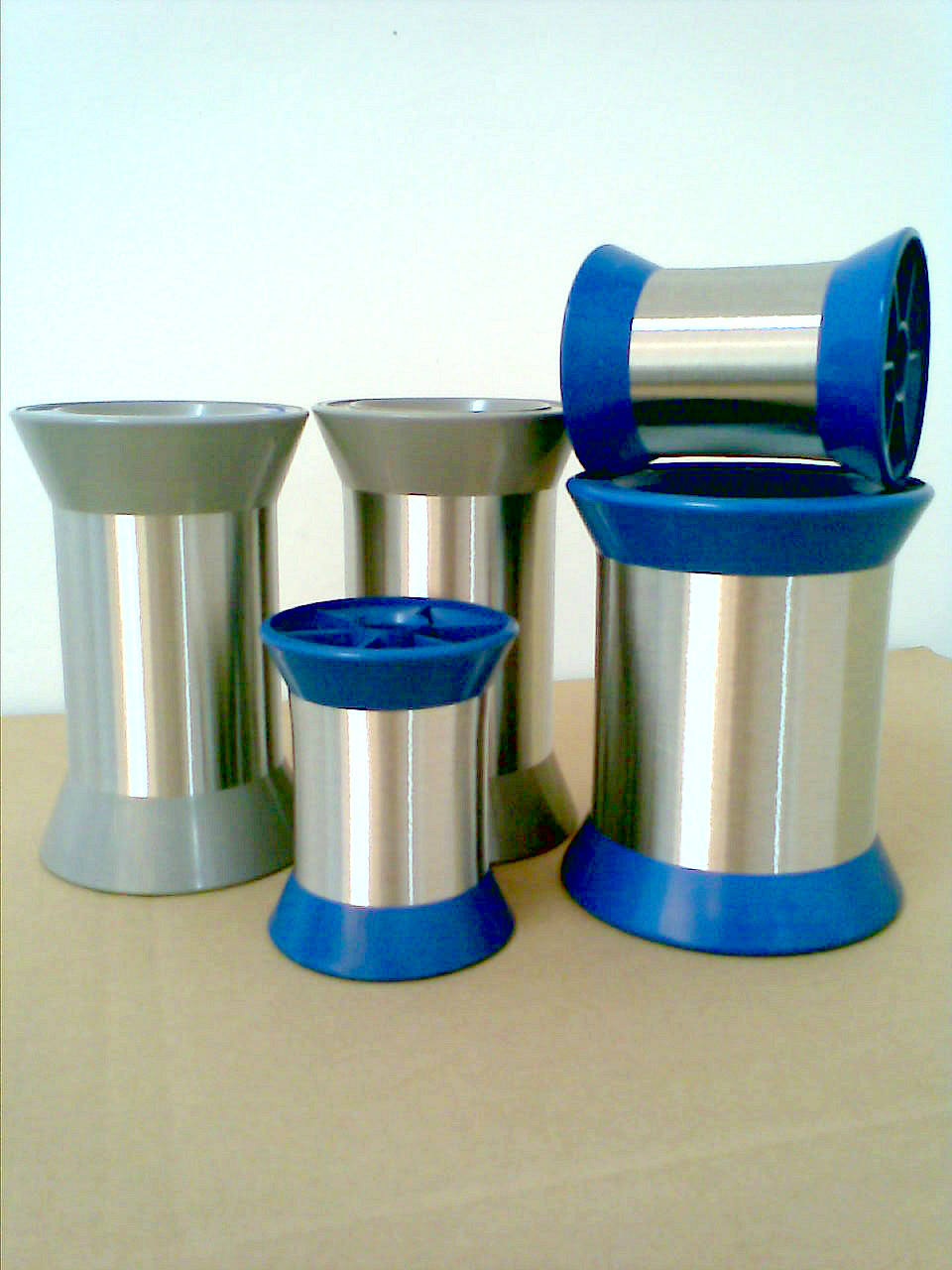 2021-10-08
2021-10-08
1. 200 Series: 201,202, etc.: to nickel and manganese, corrosion resistance is relatively poor, the domestic widely used as a 300 series of cheap alternatives. Strictly speaking, can not be regarded as stainless steel.
2. 300 Series:
(1) Model 301 - Good ductility for molded products. It can also be rapidly hardened by machining. Weldability is good. Wear resistance and fatigue strength is better than 304 stainless steel.
(2) Model 302 - corrosion resistance with 304, due to relatively high carbon intensity and better.
(3) Model 303- By adding a small amount of sulfur and phosphorus to make it more than 304 cutting.
(4) Model 304- General type; that is, 18/8 stainless steel. GB grade 0Cr18Ni9.304 stainless steel is a common material in stainless steel, high temperature 800 degrees, with processing performance, high toughness characteristics, widely used in industrial and furniture decoration industry and food and medical industry.
(5) Model 309 - has a better temperature than the 304.
(6) Model 316 - Following the 304, the second most widely used steel, mainly for the food industry and surgical equipment, add molybdenum elements to obtain a special anti-corrosion structure. As compared with 304 which has a better resistance to chloride corrosion and thus also as "marine steel" to use. SS316 is usually used for nuclear fuel recovery devices. 18/10 grade stainless steel is usually also in line with this application level.
(7) Model 321 - except for the addition of titanium elements to reduce the risk of corrosion of the material welds other than similar to the performance of 304.
3. 400 series - ferritic and martensitic stainless steel: 400 series stainless steel is an iron, carbon and chromium alloy. This stainless steel has a martensitic structure and an iron element, and thus has normal magnetic properties. 400 series stainless steel has a strong resistance to high temperature oxidation, and carbon steel compared to its physical properties and mechanical properties have further improved. Most 400 series stainless steel can be heat treated.
(1) 408 - good heat resistance, weak corrosion resistance, 11% Cr, 8% Ni.
(2) 409H: processing performance, good welding performance, high temperature oxidation resistance is good, able to withstand the temperature range from room temperature up to 575 ℃. Widely used in automobile exhaust exhaust system.
(3) 409L: control of steel in the C and N content, so weldability, formability and corrosion resistance is excellent; with 11% Cr, high temperature and room temperature with BCC structure of ferritic stainless steel; due to the addition of Ti elements , So the high temperature corrosion resistance and high temperature strength is better. 750 ℃ below the air oxidation resistance and corrosion resistance. Used in automotive exhaust pipes, heat exchangers, containers, etc., after welding is not heat-treated products.
(4) 410: martensite on behalf of steel, high strength, high hardness (magnetic); corrosion resistance is poor, not suitable for use in severe corrosive environments; low C content, good processing, through heat treatment can surface hardening .
(5) 410L: 410 steel, based on the lower C content, its processing, resistance to welding deformation, excellent high temperature oxidation resistance. Used in mechanical construction parts, engine exhaust pipe, boiler combustion chamber, burner.
(6) 420J1: hardened after the high hardness, good corrosion resistance. Used in tableware (knife), turbine blades.
(7) 420J2: martensite on behalf of steel, high strength, high hardness (magnetic); poor corrosion resistance, poor processing formability, wear resistance; can improve the mechanical properties of heat treatment. After quenching, than 420J1 steel hardness. Widely used in processing knives, nozzles, valves, ruler, tableware.
(8) 430: As the representative steel of ferritic steel, the coefficient of thermal expansion is excellent, and the moldability and oxidation resistance are excellent. For heat-resistant appliances, burners, household electrical appliances, 2 types of utensils, kitchen sink. Low cost, good processing is the ideal SUS304 alternatives; anti-mile corrosion is good, the typical non-heat-treated hardening of ferritic stainless steel.
(9) 436L: heat resistance, good abrasion resistance, containing niobium element, so its processing, excellent weldability. Washing machine, automobile exhaust pipe, electronic products, 3 layer bottom pot.
(10) Model 440 - high-strength cutting tool steel, carbon is slightly higher, after appropriate heat treatment can get a higher yield strength, hardness can reach 58HRC, are the hardest of the list of stainless steel. The most common application is the "razor blade". There are three commonly used models: 440A, 440B, 440C, in addition to 440F (easy processing type).
4. 500 series - heat-resistant chromium alloy steel. In order to further increase the oxidation resistance of the material, a certain amount of nickel and nitrogen are added to the material and treated with rare earth in order to improve the diffusion capacity of chromium atom and enlarge the austenite structure, and improve the heat resistance and heat intensity of the alloy steel . Widely used in thermal power plant boiler nozzle, pre-combustion chamber, door hole, etc .; metallurgical furnace door, furnace baskets, pipe clamp, bottom roller; heat treatment furnace baskets, furnace and all heat-resistant materials.
5. 600 series - martensitic precipitation hardening stainless steel. 630 - the most commonly used precipitation hardening stainless steel model, 630 stainless steel is precipitation, quenching water, martensitic stainless steel, and this grade has high strength, hardness and corrosion resistance and other characteristics. After the heat treatment, the mechanical properties of the product is more perfect, can reach up to 1100-1300 mpa (160-190 ksi) of the compressive strength. This grade can not be used at temperatures above 300 ° C (570 ° F) or at very low temperatures. It has good resistance to atmospheric and dilute acids or salts and has the same corrosion resistance as 304 and 430. Mainly used in offshore platforms, helicopter decks, other platforms, food industry, pulp and paper industry, aerospace (turbine blades), mechanical parts, nuclear waste barrels.


